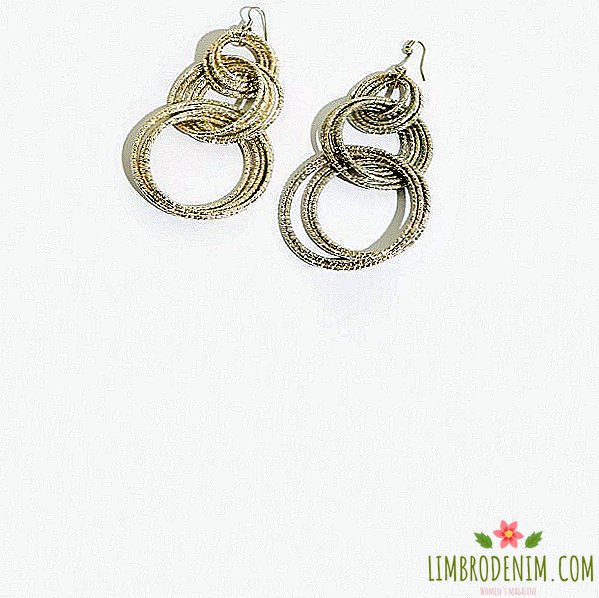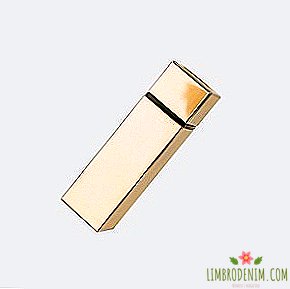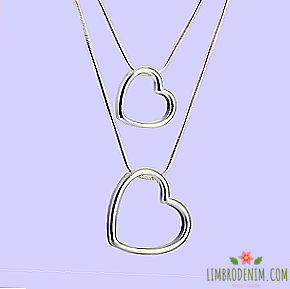Skin renewal: What you need to know about cosmetics with acids
The very word "acid" in the context of facial sounds a bit scary, especially if we recall how in the chemistry lesson the pieces of metal were dissolved in a test tube with hydrochloric acid. However, completely different acids are used in cosmetology, and FDA studies conducted over several decades have shown that the use of certain acids on the skin is absolutely safe.
In the context of facial care, acids are primarily associated with exfoliation and deep peeling, but in fact their action is much broader. In addition to acid exfoliants, there are acids that retain water in the skin and also have both of these properties. The famous hyaluronic acid, which can be found in many moisturizers, is just the type of acid that does not have peeling properties, but it is able to retain water in the skin. In cosmetology, it is used not only as a moisturizing component, we will ever devote a separate detailed material to a wide range of its application, but for now let's focus on acids that help in skin renewal.
Why do I need to peel the skin
Millions of cells die every day on the surface of our skin, and this process can be intensified by solar radiation, due to genetic susceptibility or specific diseases. When the cornified cells accumulate too much, it leads to dullness, uneven complexion, fine wrinkles, peeling and clogged pores. These and other related problems can be solved with regular exfoliation - it can be mechanical or chemical. The mechanical method is to remove the upper stratum corneum with abrasives: scrubs, peels, rolls or brushes for washing. Chemical also involves the use of products with acids that remove dead skin cells and significantly improve its condition, and at the same time help the caring cosmetics to act more efficiently.
Dermatologists are increasingly advised to give preference to the last option - the chemical one. "Scrubs or brushes work only in the uppermost layer of the skin and give a weak and short-term effect," explains Rita Lee, a biochemist and author of the blog about skin care Just About Skin. “Mechanical peeling is more traumatic, superficial, removes the stratum corneum and does not have such a therapeutic effect as a chemical one,” says cosmetologist Sali Kardava. “Acid peeling is a healing procedure, gives deeper cleansing, suppresses the activity of sebaceous glands, removes hyperpigmentation from post-acne and photo-aging, reduces pores and gives deep hydration. "
What problems solve different acids
All exfoliating acids work on the same principle: they dissolve dead skin cells of the epidermis and help the skin to quickly get rid of them, freeing up space for new ones. In its simplest approximation, this is controlled damage to the skin, aimed at leveling its relief and renewal. Due to its properties, hydroxy acids help the moisturizing components of other products work more efficiently and penetrate deeper into the epidermis. Currently, cosmetology uses three subclasses of acids: alpha-hydroxy, beta hydroxy, and polyhydroxy acids.
ANA acids are extracted from plants and milk, but most of the acids used in cosmetology are artificially synthesized in laboratories. "In low concentrations - up to 4% - alpha-acids are able to retain water in the epidermis, and in higher concentrations - from 5% and above - act as exfoliants," said Paul Begun, a world expert in cosmetology and beautypedia.
AHA-acids are water soluble, they are not able to penetrate deep into the skin, but work fine on its surface and stimulate renewal. Alpha hydroxy acids are most effective in combating the signs of photoaging, such as wrinkles, pigmentation, loss of elasticity, radiance, elasticity, as well as traces of post-acne. They contribute to the production of collagen and elastin, which is especially important for fading skin.
Salon peels with high concentrations of glycolic acid are effective in the treatment of complex forms of acne
Most often in the exfoliating agents of all price categories glycolic acid is found. It is about the effect of this AHA-acid on the skin that most studies have been conducted. It is a cheap product derived from sugar cane, but it is also one of the most effective. A study of dermatologists from Wakayama Medical University has shown that the use of salon peels with high concentrations of glycolic acid is extremely effective in the treatment of complex forms of acne. It also increases the level of hydration of the skin and the content of collagen in it. The second most studied and popular in cosmetology is lactic acid, it is contained in all dairy products. Remember the legend of Cleopatra and a hundred mares? This is it. This acid, as well as glycolic, has exfoliating, anti-aging properties and helps fight the signs of skin photoaging. The degree of effectiveness of lactic and glycolic acids are about the same.
As part of cosmetics, citric acid can also often be seen, but in most cases it is not used as a peeling component, but as a preservative or acidity regulator and is indicated at the very end of the list of ingredients. At the same time, its regenerating and renewing properties are in many respects similar to glycolic acid. Much less in the composition of caring means found almond acid. Dermatologists recommend it to owners of sensitive skin, as it is less aggressive, but at the same time it gives a weaker exfoliating effect. The action of malic and tartaric acids is less studied, mostly they are used as preservatives and acidity regulators. However, dermatologists from the American Institute of Aesthetic Medicine Gateway have proven the effectiveness of malic acid in the fight against hyperpigmentation.
The newest generation of ANA-acids is polyhydroxy acids, they are often recommended for people with sensitive skin and atopic dermatitis. “Compared with alpha-hydroxy acids, PHA has a softer and more gentle effect on the skin and, as a rule, does not cause irritation,” says cosmetologist Sali Kardava. “This non-aggressive effect of polyhydroxy acids can be explained by high molecular weight. Large molecules penetrate the skin more slowly, not cause of irritation. During clinical studies, it has also been proven that PHA are capable of preventing skin aging. "
BHA-acids penetrate deep into the pores, clean them from the inside, dissolve black spots and generally have a beneficial effect on the skin
Polyhydroxy acids include gluconic acid, which is a natural component of the skin, and its use stimulates the production of elastin, which is especially useful for fading skin. Polyhydroxy acids also enhance the protective functions of the skin and, unlike other acids, do not increase its photosensitivity. Moreover, a study by staff at the Pennsylvania College of Optometry showed that gluconic acid is capable of blocking up to 50% of ultraviolet radiation.
Another group of acids is BHA, or beta hydroxy acids. They differ from alpha-hydroxy acids in that they dissolve in fat, not water, and are able to penetrate deep into the pores, clean them from the inside, dissolve black dots, and generally have a beneficial effect on acne-prone skin. There are several types of BHA-acids, but usually in cosmetology, BHA refers to salicylic acid. Despite the fact that salicylic acid is not related to beta-hydroxy acids by chemical structure, traditionally such a definition is used among cosmetologists and dermatologists. In its pure form, salicylic acid has a disinfecting and anti-inflammatory effect, the agents containing it are most often prescribed to people with coarse oily skin suffering from rashes. However, it is also an excellent exfoliating agent and, like AHA-acids, fights the signs of photo-aging of the skin of any type.
Can acids harm
The effectiveness of hydroxy acids is determined primarily by their concentration and residence time on the skin. AHA-acids in cosmetics for home care often have a concentration of from 5 to 15%, and salicylic - 0.5-2% by volume. Responsible manufacturers, as a rule, indicate the concentration of acids on the packaging of products, but if there is no special marking, then a simple rule can be followed: the closer to the beginning in the list of ingredients is one or another acid, the higher its concentration.
Keep in mind that two products with the same concentration can (and most likely will) work in different ways, since what other ingredients are contained in the product and what level of acidity it has. For example, the US Food and Drug Administration (FDA) recommends choosing products that have a pH above 3.5, but manufacturers often do not indicate it on their packaging. In this case, you should either use the test strips yourself to determine the pH of the product, or study the recommendations on special resources. For example, in her book “Don't Go to the Cosmetics Counter without Me”, Paula Begun measured the pH of most well-known acidic products — they can be used as a home guide.
In any case, to establish how often a particular person can use the acid, it will turn out only by experience - by trying different concentrations and frequency of use. “Proper exfoliation makes the skin smooth, fresh and soft. Your goal is healthy skin. The main symptoms of overdosing with acids and time to slow down are tightness, peeling, burning, sensitivity, rashes, couperosis and pigmentation, cautions Famous British skin care specialist and consultant to several well-known cosmetic brands Caroline Chirons - If you find any of these symptoms while using acids, take a break and start using skin care products. dix and sensitive skin. "
How to choose a tool with acids
If the main problems of the skin are directly related to its surface - fine wrinkles, dullness, pigmentation or post-acne, then you should pay attention to the ANA-acid. The FDA recommends using alpha hydroxy acids at a concentration of no more than 10% at home. “Alpha hydroxy acids have proven efficacy against wrinkles, skin irregularities and pigmentation, which are the result of sun damage to the skin. AHA acids work best in a concentration of 5-8%,” says dermatologist Casey Gallacher, one of the authors of the famous medical science educational blog VeryWell.
In the case when the main problem that you want to solve with the help of acids is clogged pores and light forms of acne, the main assistants will be products with BHA-acids that can work deep inside the pores. "Salicylic acid reduces oily skin and has anti-inflammatory properties. By itself, it does not cure acne, but it helps antibacterial components of cosmetics penetrate the skin better. BHA acids work best in concentrations of 1-2%," says Dr. Gallagher.
Some manufacturers offer products containing several acids at the same time, including glycolic acid along with salicylic acid. "You can use different acids both together and separately throughout the day, but when used simultaneously, the risk of irritation and an allergic reaction increases. In this case, it is enough to exfoliate acids alone, and there is no need to use additional products such as scrubs or brushes for washing ", - advised the experts from the team Flooring Runner. Considering the risks, the combination of acids is justified when the problematic skin suffers from dehydration: in this case, salicylic acid will disinfect, while glycolic will help prevent water loss.
Can I use products with acids in summer?
The use of peeling acids in the care increases the skin's sensitivity to the sun and can lead to pigmentation and scarring. This is due to the fact that the layer of dead cells on the skin surface serves as a natural, albeit weak sunscreen filter and protects us from UV rays. When using acids, this layer is removed and the skin remains unprotected. Does this mean that it is worth to postpone the use of acids in the summer due to strong solar activity? Not. A study by the European Scientific Committee on Cosmetic and Non-Food Products (SCCNFP) showed that using acids along with sunscreen with a factor of 15 and above did not reveal any additional damage to the skin from ultraviolet radiation compared to samples that did not use acids.
It is important to remember that the intensity of UVA-radiation is about the same regardless of the season. Therefore (and we will never tire of repeating this) sunscreen should be used all year round: protection from the sun is one of the most important conditions for preserving the youth of the skin. To understand how the sun affects the skin and what kind of sunscreen to choose, our thematic guides will help.
Photo: © Gleam - stock.adobe.com., © exopixel - stock.adobe.com., © Igor Kovalchuk - stock.adobe.com.








